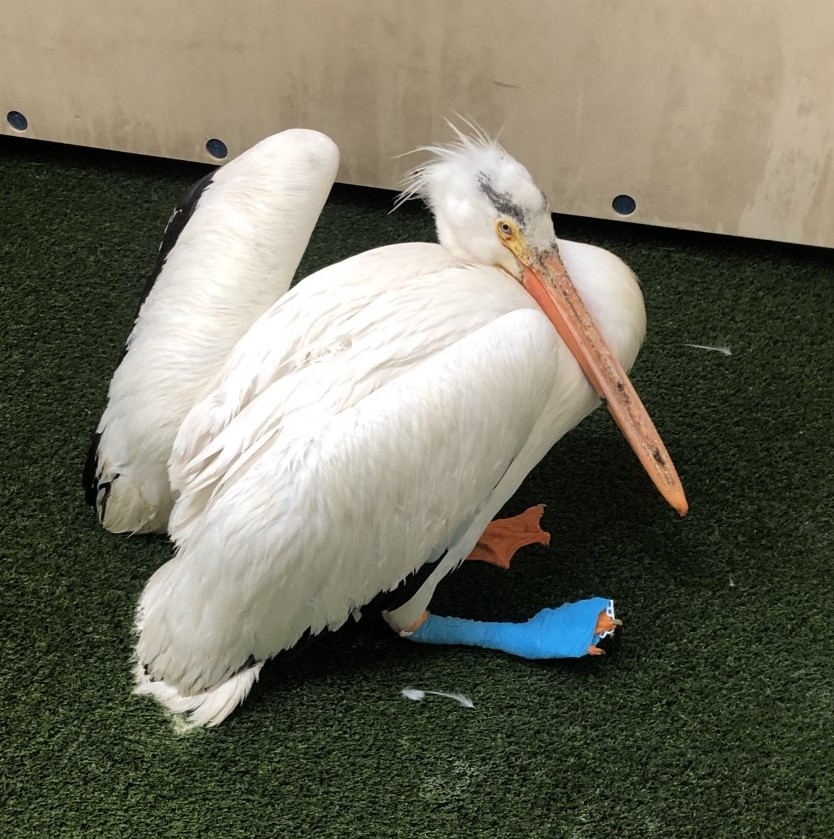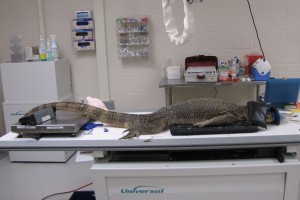
An American white pelican believed to have survived last Michigan’s winter with fractures in both wings and an injured right foot has now found refuge at the Detroit Zoo after she was left behind by her scoop in Monroe, Michigan.
“It is uncommon that American white pelicans migrate through Michigan, but it happens from time to time,” said Bonnie Van Dam, associate curator of birds for the Detroit Zoological Society. “Unfortunately, when the rest of the pelicans left the area to continue on their migration, this girl simply couldn’t.”
In early May, concerned citizens reported seeing an injured bird at the Port of Monroe. She was picked up by a local licensed rehabilitator who then called the Detroit Zoological Society (DZS) for help when the pelican was deemed non-releasable due to her injuries and refused to eat. When she arrived at the Detroit Zoo, she was weak, malnourished and unable to walk.
“When we received her, she was underweight for the species – around 8 pounds,” said Van Dam. “After spending some time recuperating at the Detroit Zoo, she was able to pack on an extra 2 pounds. The average weight of an American white pelican can range from 10 to 15 pounds.”
During a medical examination, the DZS animal care staff determined that her injuries to both wings were old fractures, while her right foot injury seemed to be more recent. The cause of her injuries is unknown.

“Quite honestly, she’s very tough,” said Van Dam. “It’s truly amazing that she was able to survive and keep herself fed with all of her injuries.”
DZS veterinary staff used two splint designs over a period of two months on her foot, which has since healed to the point where she can now use it. The damage to her wings, however, has rendered her permanently unable to fly. The American white pelican has joined four pink-backed pelicans in the American Grasslands habitat at the Detroit Zoo.
“We’re still thinking on her name. We want to make sure we give her one that is strong and fitting of her personality,” said Van Dam.
The newcomer can be distinguished by her larger stature, bright yellow beak and whiter feathers, with black tips on her wings.
– Alexandra Bahou is the communications manager for the Detroit Zoological Society.
















